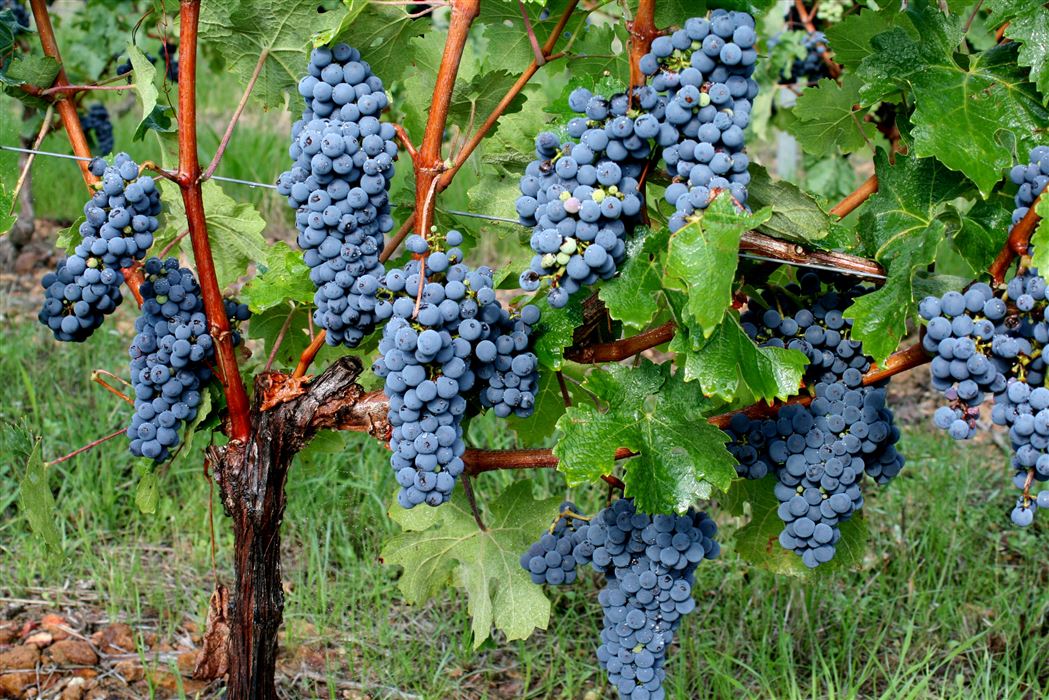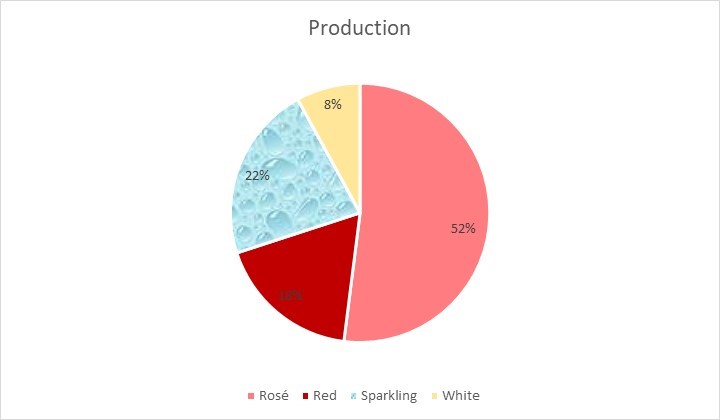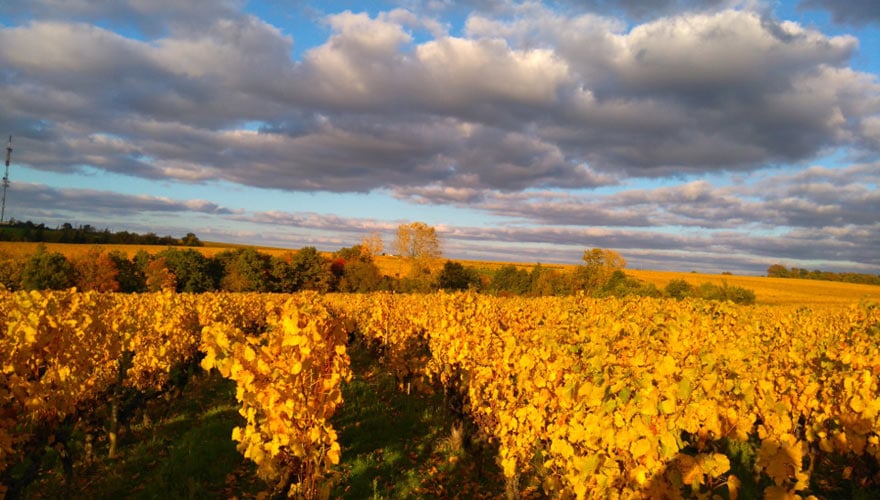Anjou-Saumur can at first glance seem rather mind-boglingly diverse, so we hope that our Fast Facts feature and Anjou-Saumur guide will give you a clear overview of this wine region and its many different styles of wines.
Our Anjou-Saumur guide includes the essentials of terroir, the main grape varieties used and the different wine styles, as well as an idea of the production area in size and number of producers. It is an in-depth guide for subscribers only.
[mepr-hide if=”rule: 2080″]
…
This content is exclusive for Members. Take a look at the introductory packages below to become a Member of 80 Harvests and get unrestricted access to all our content.
Thank you for supporting the journey and being part of the 80 Harvests community!
[mepr-group-price-boxes group_id=”2070″]
[/mepr-hide]
[mepr-show if=”rule: 2080″]
Where is it?
These are two adjoining wine regions in the western Loire area, bordering Pays Nantais to the west and Central Loire to the east. They are centred on the towns of Angers and Saumur.
The Essentials of Terroir
Climate & Landscape
Anjou
The climate in Anjou is moderated by its proximity to the Atlantic Ocean. It has mild winters, hot summers, plenty of sunshine and small variations in temperature. Some areas have a very dry microclimate, which enables the growth of plants that are more normally found in Mediterranean areas, while others have the damp conditions needed for noble rot to form.
The conditions for noble rot
In Anjou, there are some vineyards planted along the banks of the Layons tributary of the Loire, where mists tend to form on autumn mornings and then dispel towards midday. When the weather conditions are right, there is little or no rain and enough sunshine to dry the grapes each afternoon, the marvel that is noble rot can occur. This is a phenomenon that only happens in a few select areas around the world, including Sauternes in Bordeaux and Tokaj in Hungary. When it happens, some of the world’s most complex wines can be produced. The best sites in the Loire, including Bonnezeaux and Quarts de Chaume, are on the steep slopes of the right bank of the Layons.
Saumur
The Saumur vineyards are further away from the sea and the hills block winds coming from the west, and so the climate is only semi-maritime and seasonal variations are more pronounced.
Temperatures
Average ranges from 5°C in January to 20°C in July.
Rainfall
650mm
Soils
In Anjou the subsoil is mainly slate, sandstone and carboniferous schists, as well as volcanic rock, all originating from the Massif Armoricain.
Between Angers and Saumur there is a transition between the older bedrock to the west and the sedimentary basin to the east.
Longitude
0.08˚W (Saumur)
Latitude
47.2˚N (Saumur)
Viticulture Facts & Vineyard Management
The Loire Valley has many small-sized vineyard plots, a great many in family hands and this leads to great variety in viticultural techniques and grape varieties. Many viticulturists in the Loire have opted to grow their grapes organically or biodynamically and Nicolas Joly of Coulée de Serrant in Savennières is one of the world’s most well-known proponents of biodynamism.
Vine Density
4-5,000 vines/hectare.
Maximum yields:
60 hl/ha (lower for some types of wine, for instance it is just 25 hl/ha for Quarts-de Chaume or Bonnezeaux)
Vine Training systems
Single or double Guyot pruning is the most widely used system.
There are some vines trained in the gobelet form (as a free-standing bush) in the sweet wine areas like Bonnezeaux.
Pests and Diseases
Botrytis is an issue. There is always a risk for growers leaving their grapes to see if they develop noble rot. If the conditions aren’t right and the humidity hangs around without the sun coming through to evaporate the moisture off the grapes, then grey rot can occur, instead of noble rot, and the harvest may be ruined.
Viticultural Challenges
Chenin Blanc can be slow to ripen in the cool Loire and there is a risk of wet weather spoiling the crop late in the season. It can also ripen unevenly, so it is best harvested over several sessions (known as tries), with only the ripe clusters being selected each time.
Chenin Blanc is quite vigorous and inclined to over-crop. When yields are too high, the resulting wine is boring. So if you want to grow quality grapes, you need to work hard throughout the growing season to control the yields.
Anjou-Saumur guide: White Grape Varieties
Chenin Blanc (also known as Pineau de La Loire).
One of the world’s most versatile varieties of wine grape, Chenin Blanc is prized for its high acidity, which brings freshness to any wine, even from hot regions. It makes any style of white wine from dry to luscious and can be still or sparkling. It is also an obliging vine that will produce huge yields of grapes if that is what the grower wants and this is part of the reason why this variety is so under-appreciated. Overcrop and badly handle this grape and you get a boring wine. However, when the yields are controlled and the wine is skillfully made, this grape can be made into fantastic wines.
Chenin Blanc tends to have more body and texture than Sauvignon Blanc plus similar levels of fresh acidity. When it is young, dry Chenin Blanc has aromas of green apples, greengages, angelica and it can have a mineral note. Some young dry Chenins can be a little austere. But they can age for decades and develop aromas and flavours of bioche, honey, acacia and quince. The grape can be left extra-long on the vine and harvested late or even partially raisined and the resulting wines will have some level of sweetness (which is balanced by that acidity). And, when the conditions are right – as can happen in some parts of Anjou – the grapes can become botrytised, making for even more complex aromas and flavours (think marzipan, peaches, molasses, quince and pineapple).
Anjou-Saumur guide: Black grape varieties
Grolleau. A black variety with high acidity and little else to recommend it. It is used to make Rosé d’Anjou.

Photo of Cabernet Franc vines, courtesy of La Seigneurie winery in Saumur.
Cabernet Franc is the parent of flashier offspring Cabernet Sauvignon. The Loire is one of the few areas that takes this variety seriously and it produces some beguiling and food-friendly wines from it. Cabernet Franc tends to be lighter in colour, tannins and body than Cabernet Sauvignon but makes up for this with delicious aromas of red fruits, like raspberries, a note of pencil shavings and fresh, elegant texture.
Gamay. Grown in small quantities to make the light, fruity Anjou Gamay.
Cabernet Sauvignon. This variety is used in rosé wines and as a blending partner for Cabernet Franc in Saumur Rouge and Saumur-Champigny.
Pineau d’Aunis. A black variety with good fruitiness that brings a peppery note to blends.
Anjou-Saumur guide: Wine Varieties & Winemaking Styles
White wines: Chenin Blanc is king
Dry white wines:
Chenin Blanc dry wines are always refreshing with their high acidity.
Traditionally, winemakers have produced oak-free fruity wines for early drinking. Such wines are still widely available, but the need to compete in increasingly demanding international markets has led to a number of evolving trends in the Loire:
- Growers are now often hand-picking riper grapes. This makes a significant difference – when Chenin Blanc grapes are picked underripe, the wine can have aromas and flavours of green apples and vegetal notes. However, ripe grapes lead to wines with notes of apples, pears, citrus and stone fruit (greengages)
- Some skin contact is taking place, providing more colour and texture
- Increasing use of oak (some new) for fermentation and/or ageing, which adds notes of butter, vanilla or acacia
- Allowing the wine to undergo partial or complete MLF, which adds texture to the wine
- Some wines spend some time on their lees, lending them toast and honey notes.
- Some winemakers are leaving a little residual sugar in some “dry” wines.
Dry white wine styles
- Anjou Blanc is a dry white made from 80% Chenin Blanc and the balance can be Chardonnay or Sauvignon Blanc. These tend to be refreshing, dry and fruity with fresh acidity.
- Saumur Blanc is very similar to Anjou Blanc, being made from Chenin Blanc and being both high in acidity and potentially long lived.
- Savennières has its own appellation and some very fine dry wines are made there. These are 100% Chenin Blanc. These wines tend to have a pronounced nose of tropical fruit, pears and honey
Sweet white wines
These are made from Chenin Blanc grapes, which may have been harvested late or even left to raisin on the vine, concentrating their sugars. Other wines can, in a good year, be made partly or wholly from botrytised grapes.
Late harvest wines are full-bodied, luscious and have high acidity. They have aromas and flavours of tropical fruit and dried fruit. Quality varies and some wines have damaged the reputation of Coteaux du Layons.
Botrytised wines, when young, are a deep yellow colour and offer an intense, complex nose of floral, stone fruit and candied citrus fruit aromas. They are luscious but this is balanced by high acidity and they are full-bodied with complex flavours. Over time (they can age for decades), the colour becomes more golden and the aromas and flavours become even more complex, with notes of honey, nuts and a minerality coming through.
Sweet wine appellations
At the end of 2011, two cru appellations, both in Anjou, were passed into law. Quarts de Chaume became a Grand Cru appellation, and Coteaux du Layon Chaume became a Premier Cru appellation. Both appellations lie within the 1,400-hectare Coteaux du Layon appellation on the banks of the river Layon, a tributary of the river Loire.
Quarts de Chaume is a 50 hectare appellation with schist soils around the village of Chaume. This is the Loire’s first Grand Cru and the words can be added to the name as of the 2010 vintage. The new Coteaux du Layon Premier Cru is adjacent to Quarts de Chaume. For both appellations, there are rules regarding permitted yields and grape ripeness and chaptalisation (adding sugar to the must before fermentation) is not allowed.

Coteaux de l’Aubance and Bonnezeaux also have their own appellations for sweet wines.
Coteaux de Saumur is Saumur’s medium-sweet white, made in very small quantities from Chenin Blanc grapes.
Sparkling wines
- Saumur’s most important wine (and France’s most important mousseux) is Saumur Mousseux, a well-priced white or rosé sparkling wine made from Chenin Blanc grapes, often with a mix of international and Loire varieties.
- Crémant de Loire is also made from Chenin Blanc, but the criteria are more rigorous than for Mousseux: yields of 50hl/ha rather than 60 hl/ha and 12 rather than nine months’ tirage.
- Anjou Mousseux
Rosés
- Rosé d’Anjou is made from Grolleau and can be very sickly sweet, though quality is improving. It must have a minimum level of residual sugar of 7g/l and it generally has less than 20 g/L
- Cabernet d’Anjou is a rosé wine made from Cabernet Franc or sometimes from Cabernet Sauvignon. It can be quite sweet (minimum residual sugar 10 g/l) but usually has very high acidity to counterbalance this, making for a more elegant wine. Some Cabernet d’Anjou wines can age for decades.
- Cabernet de Saumur is a light rosé, usually drier (maximum of 10g/l of residual sugar) and less ambitious than Cabernet d’Anjou
- Rosé de Loire can be made across a broader area of the Loire and is made from Cabernet Franc and/or Cabernet Sauvignon. It is sweet (at least 10g/l residual sugar).
Reds
- Anjou-Villages is a serious red wine appellation, based on Cabernet Franc.
- Anjou Gamay are lighter reds made from Gamay.
- Anjou Rouge – crisp reds.
- Saumur Rouge – 70% Cabernet Franc (min), with Cabernet Sauvignon and/or Pineau d’Aunis and can be a refreshing, relatively light, fruity wine.
- Saumur-Champigny – this area used to make whites from Chenin Blanc but now is predominantly Cabernet Franc (with some Cabernet Sauvignon and, rarely, Pineau d’Aunis. Some good reds are made here.
Traditional Wine Pairing
- Red wines with stuffed mushrooms or peppers.
- Dry whites with savoury tarts, quiche and grilled fish.
- Sweet whites with foie gras, poached pears, pear and Roquefort cheese tart, apricot souffle with crème Anglaise
- Sparkling wines complement charcuterie and appetizers, as well as fruity desserts.
- Rosés: Prosciutto and melon, fried fish dishes, spicy chicken enchilladas
Production Area
18,500 ha
Number of Producers
- Producers: 1,000
- Cooperative wineries: 2
- Négociants: 60
Annual Production (2016)
940,000 hl / 123 million bottles

Anjou-Saumur guide: Appellations
Anjou:
- Anjou-coteaux-de-la-loire
- Anjou-villages
- Anjou-villages-brissac
- Bonnezeaux
- Cabernet-d’anjou
- Coteaux-de-l’aubance
- Coteaux-du-layon
- Coteaux-de-saumur
- Coulée-de-serrant
- Crémant-de-loire
- Quarts-de-chaume-grand cru
- Rosé-d’anjou
- Rosé-de-loire
- Savennières
- Savennières-roche-aux-moines
- Saumur
- Saumur-champigny
- communal denominations
Saumur
- Cabernet de Saumur
- Coteaux de Saumur
- Saumur
- Saumur Blanc
- Saumur Brut
- Saumur Brut Rose
- Saumur-Champigny
- Crémant de Loire (Saumur)
Interesting Facts
In Saumur there are many underground cellars hewn out of the local tuffeau, a calcareous rock that was historically quarried, leaving ready-made wine cellars. These cellars are not just great for maturing the acidic wines from this area but they are also used to produce mushrooms, which are also an important product from this area.
Anjou-Saumur resources
Loire Valley Wines (source of the statistics used in this post)
Loire Valley Wine (US site)
Clarke, O. & Rand, M. Grapes and Wines. 2015 edition. London: Pavilion.
Robinson, J., 2015. The Oxford Companion to Wine. 4th Ed. Oxford: Oxford University Press.
[/mepr-show]

